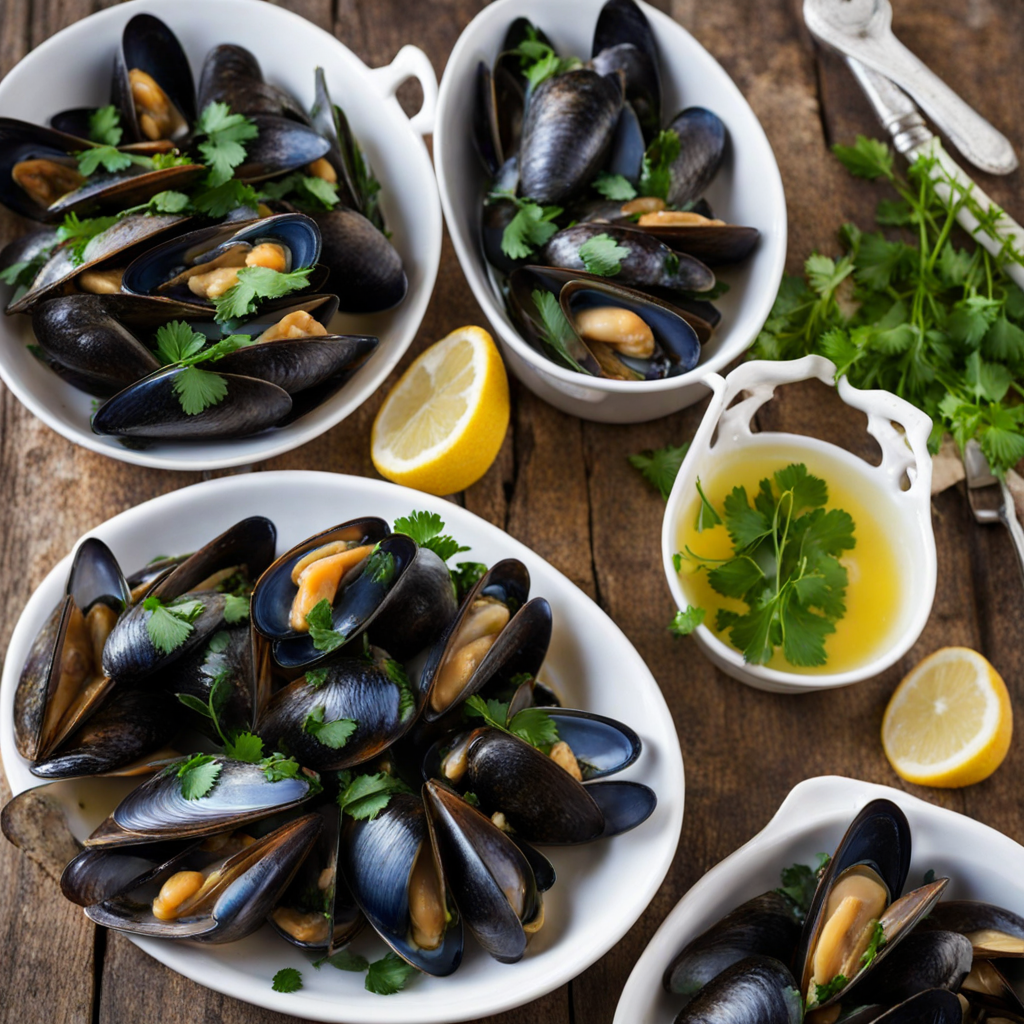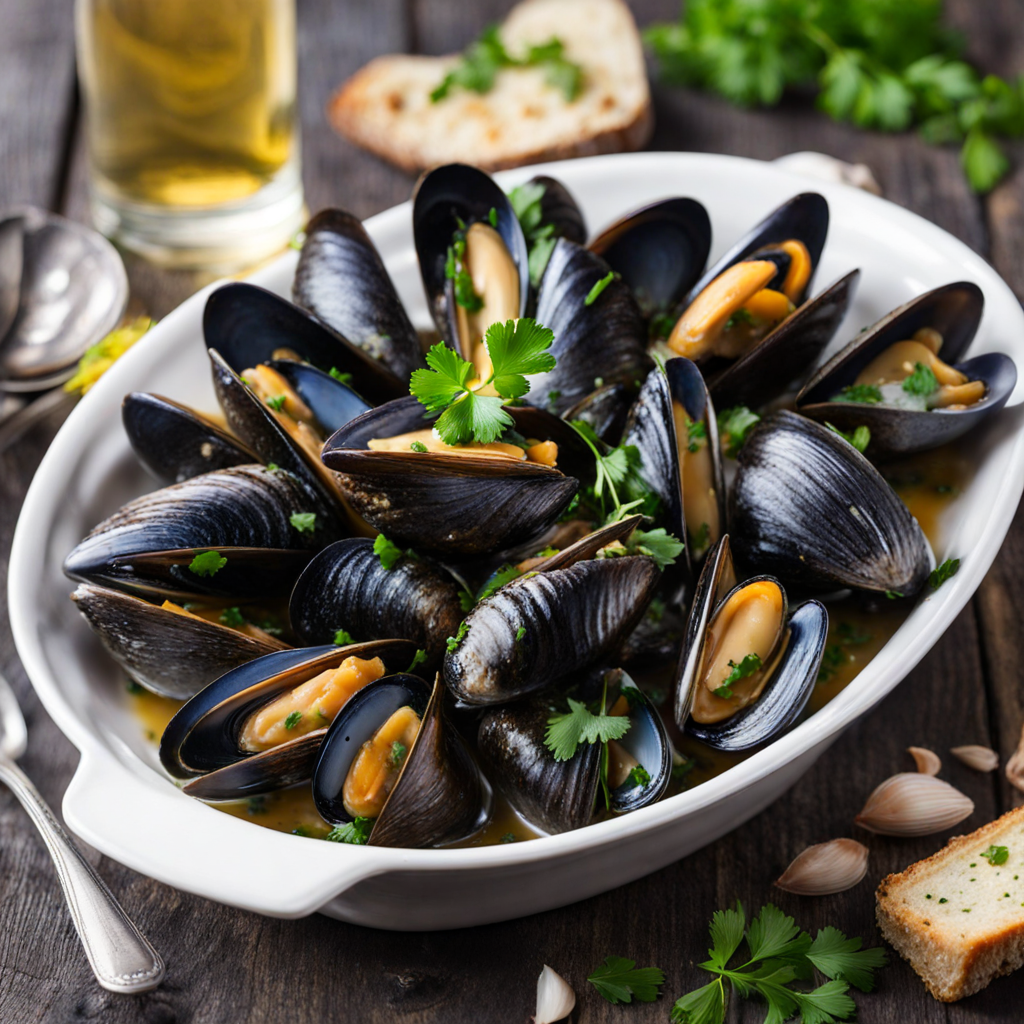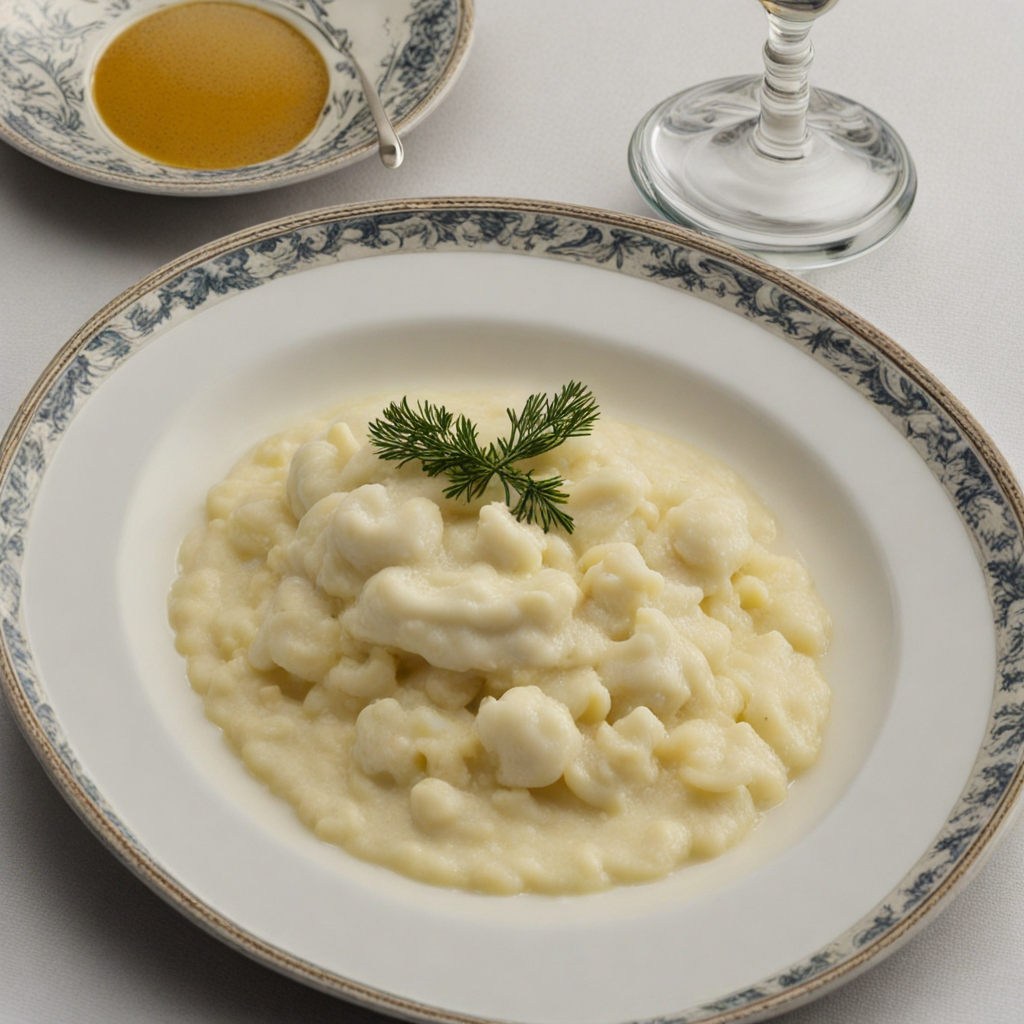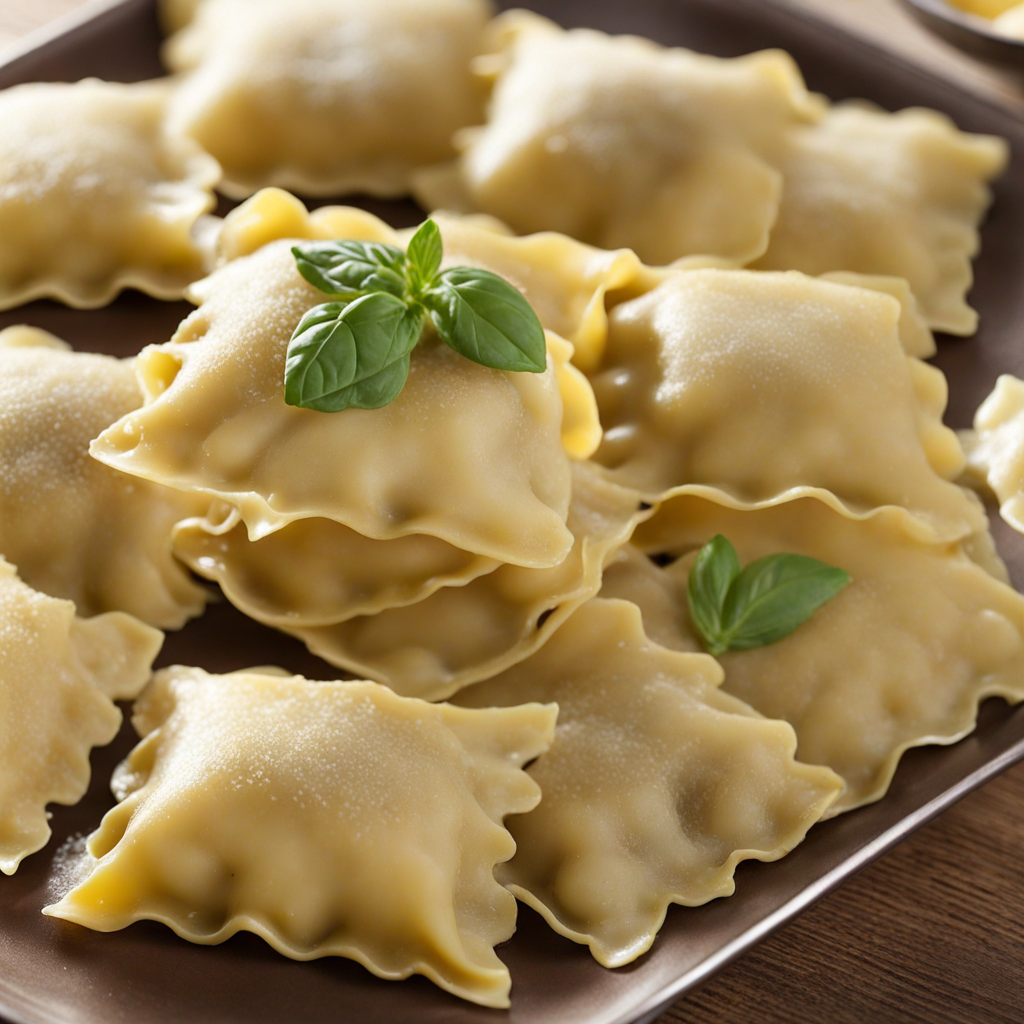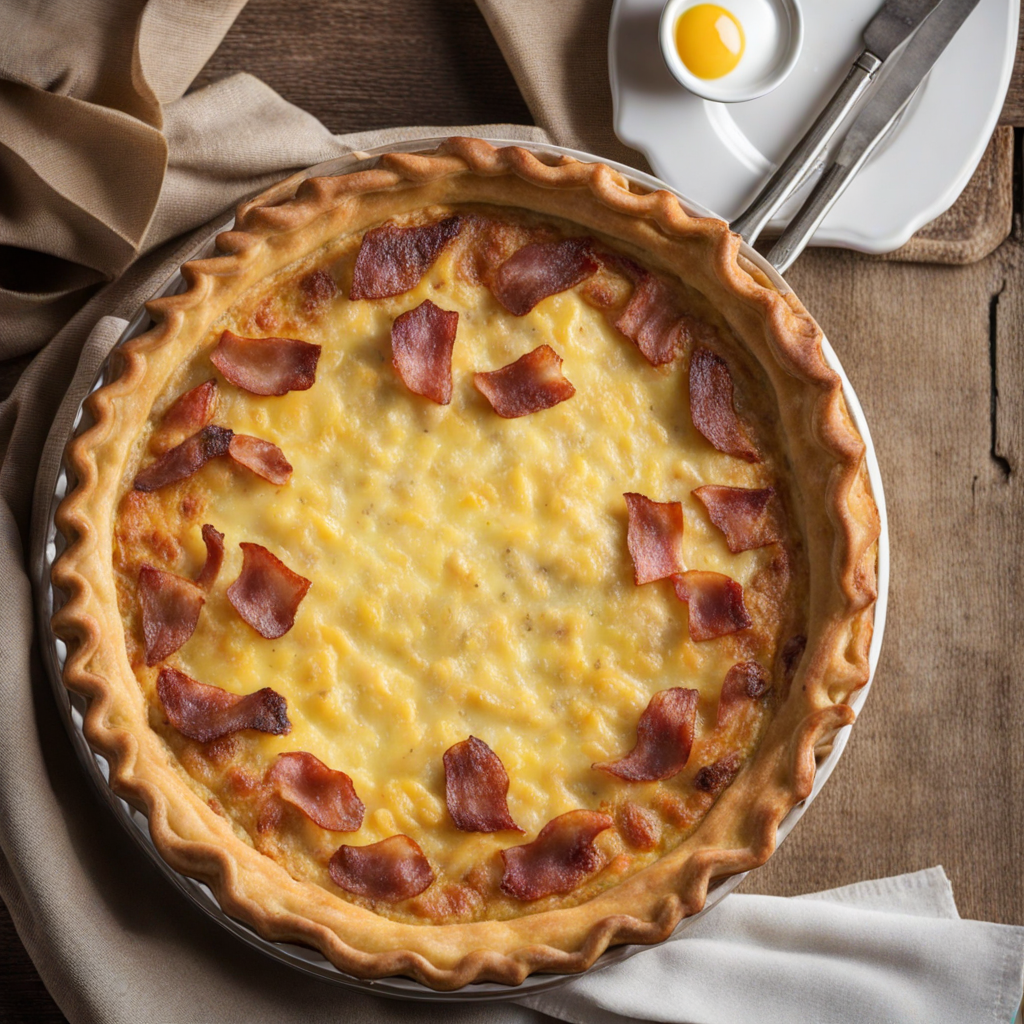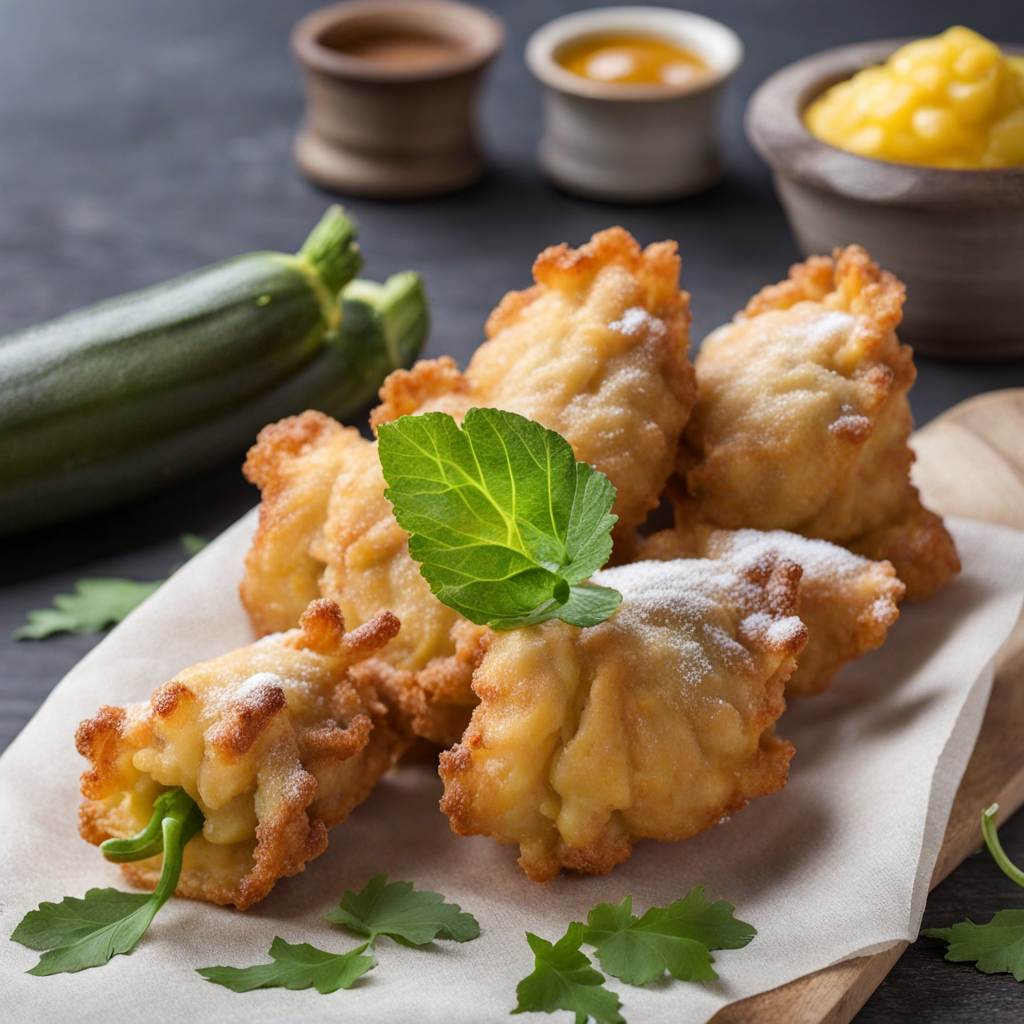Moules Marinières
Moules Marinières is a delightful dish that encapsulates the flavors of the Mediterranean, particularly popular in Monaco and along the French Riviera. This dish features fresh mussels, steamed to perfection in a fragrant broth composed of white wine, garlic, shallots, and a touch of parsley. The mussels themselves are tender and juicy, with a briny flavor that is beautifully enhanced by the aromatic ingredients in the broth. Each bite offers a taste of the sea, making it a favorite for seafood lovers and a staple in coastal cuisine. The preparation of Moules Marinières is a celebration of simplicity and freshness. The mussels are typically cleaned and debearded before being cooked in a large pot, allowing them to open up and absorb the rich flavors of the wine and aromatics. The resulting sauce is both savory and slightly tangy, perfect for dipping crusty bread into, ensuring no drop of the delicious liquid goes to waste. This dish is often served as a main course, accompanied by frites (fries) for a true bistro experience. In Monaco, enjoying Moules Marinières is not just about the food; it's about the experience of dining. Often enjoyed in seaside restaurants, the dish pairs wonderfully with a glass of chilled white wine, enhancing the overall flavors and the ambiance of coastal dining. The combination of the fresh ingredients, the sound of the waves, and the warm Mediterranean sun makes for a culinary experience that lingers long after the last mussel has been savored.
How It Became This Dish
Moules Marinières: A Culinary Journey Through Time Moules Marinières, the delectable dish of mussels cooked in white wine, garlic, and herbs, is often associated with the coastal regions of France and Belgium. While it is not exclusively a dish of Monaco, its proximity to these countries and the Mediterranean influence on Monégasque cuisine make it a cherished part of the local gastronomic landscape. To understand the rich history of Moules Marinières, we must explore its origins, cultural significance, and the evolution of this beloved dish. Origins of Moules Marinières The term "moules" refers to mussels, a bivalve mollusk that has been a staple food source for coastal communities for centuries. Archaeological evidence suggests that mussels have been consumed since prehistoric times, with shells found at ancient sites across Europe, including the Mediterranean region. The earliest documented use of mussels in cooking can be traced back to the Romans, who prized them and cultivated them in coastal waters. The term "marinières," which translates to "sailor-style," reflects the dish's roots in maritime culture. It is thought to have originated among fishermen and sailors who utilized the fresh catch from the sea to create simple and flavorful meals. The classic combination of ingredients—white wine, garlic, and parsley—was likely influenced by the available resources in coastal areas, where seafood was abundant, and wine production flourished. Cultural Significance in Monaco Monaco, the second smallest country in the world, is nestled along the French Riviera, bordered by the Mediterranean Sea. The region’s unique geography and climate have fostered a rich culinary tradition that blends French and Italian influences. Seafood has always played an important role in Monégasque cuisine, given the principality's access to the Mediterranean. The cultural significance of Moules Marinières in Monaco extends beyond mere sustenance; it embodies the essence of coastal living and the connection between the sea and the table. Traditionally, the dish is enjoyed as a communal meal, often served in large pots or bowls, inviting family and friends to gather around and share in the experience. This reflects the Mediterranean ethos of conviviality and the joy of sharing food. In Monaco, Moules Marinières is often paired with crusty bread or fries, allowing diners to soak up the flavorful broth. Restaurants along the coast, particularly in the harbor areas, prominently feature this dish on their menus, showcasing the region's seafood heritage and the skill of local chefs. The dish has become a symbol of the culinary identity of Monaco, attracting both locals and tourists alike. Development Over Time While the fundamental components of Moules Marinières have remained consistent, the dish has evolved over time, influenced by changing culinary trends and the introduction of new ingredients. In the 19th century, the popularity of mussels surged in France and Belgium, leading to the establishment of mussel farms that made the shellfish more accessible to the masses. This democratization of seafood paved the way for Moules Marinières to become a beloved dish across the region. The classic recipe for Moules Marinières typically involves steaming fresh mussels in a mixture of white wine, shallots, garlic, and parsley. The simplicity of the dish highlights the natural flavors of the mussels, allowing them to shine. However, variations have emerged as chefs and home cooks experiment with additional ingredients, such as cream, tomatoes, or different herbs. In some cases, the dish has been adapted to suit local palates, incorporating regional wines or spices. In the late 20th century, as global travel became more accessible, the popularity of Moules Marinières spread beyond the borders of France and Belgium. It garnered international acclaim and found its way onto menus in restaurants around the world. This globalization of cuisine led to further adaptations, with chefs incorporating elements from diverse culinary traditions, resulting in unique interpretations of the classic dish. Contemporary Moules Marinières Today, Moules Marinières remains a staple of coastal cuisine and an integral part of the culinary landscape in Monaco. The dish continues to be celebrated for its freshness and simplicity, with many restaurants emphasizing the use of locally sourced ingredients. The emphasis on sustainability has also influenced how mussels are harvested and prepared, with a growing awareness of the environmental impact of seafood consumption. In recent years, there has been a resurgence of interest in traditional cooking methods and locally sourced ingredients, leading to a renewed appreciation for Moules Marinières. Chefs are experimenting with innovative presentations, pairing the dish with craft beers or artisanal wines to enhance the dining experience. Some establishments even host mussel festivals, celebrating the harvest season and inviting patrons to indulge in various preparations of the dish. Moreover, the rise of food tourism has contributed to the popularity of Moules Marinières in Monaco. Tourists flock to the region not only for its stunning scenery and luxurious lifestyle but also to experience the authentic flavors of Monégasque cuisine. As visitors savor the dish in seaside restaurants, they become part of the rich tapestry of culinary heritage that defines the region. Conclusion Moules Marinières is more than just a dish; it is a reflection of the cultural and culinary history of the Mediterranean and coastal communities. From its humble origins among fishermen to its status as a beloved staple in Monaco and beyond, the dish has evolved while remaining true to its roots. Its significance lies in its ability to bring people together, celebrating the joys of sharing a meal and connecting with the sea. As Moules Marinières continues to capture the hearts and palates of diners, it serves as a delicious reminder of the enduring relationship between food, culture, and community. Whether enjoyed in a bustling restaurant in Monaco or prepared at home, this iconic dish will always evoke the spirit of the Mediterranean and the timeless allure of the sea.
You may like
Discover local flavors from Monaco


